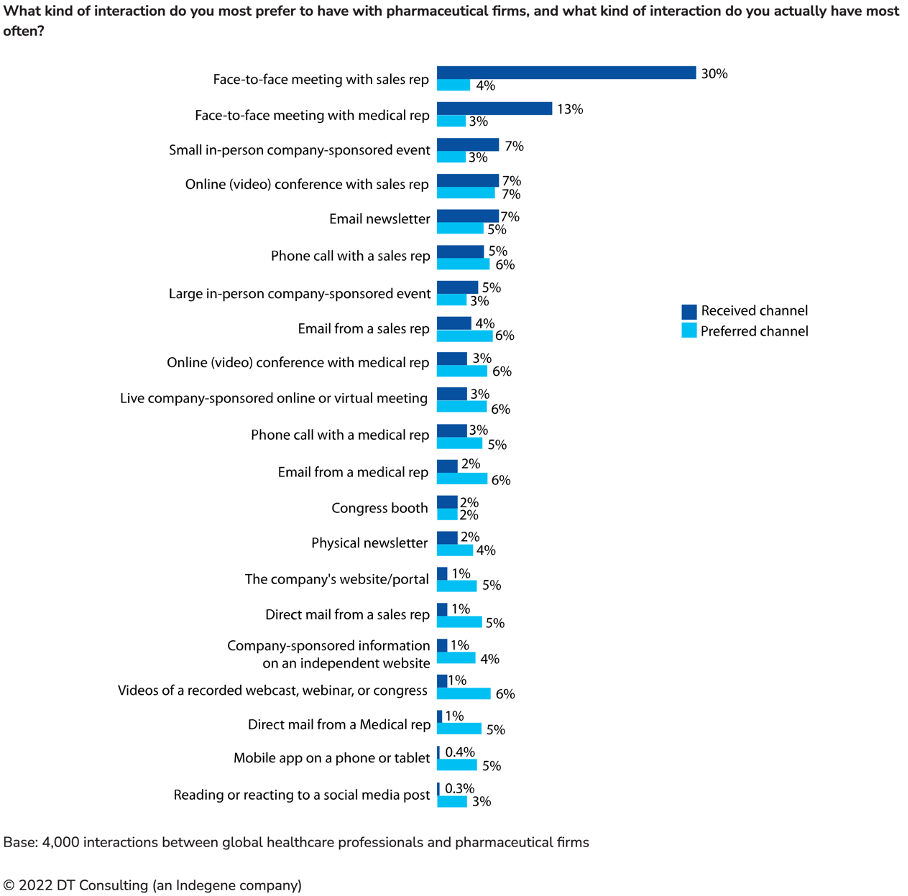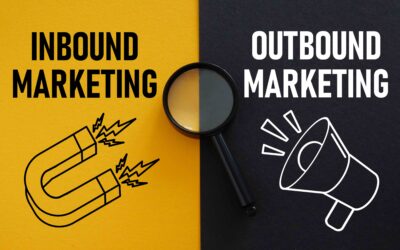Myths and misconceptions still prevails
Many scientists often believe that they are resistant to the influence of marketers. They are not alone in this conviction. Many of us tend to think that we make decisions purely based on rational reasoning, allowing us to filter marketing messages out of our decision-making process. Scientists are prone to subscribing to this belief due to their discipline and worldview, which highly values rational thinking.
However, the reality is that no one is immune to marketing efforts and messages! Marketing can impact our behaviour, even when these messages are received subliminally.
When it comes to marketing to scientists, there are distinct differences compared to other B2B businesses. This not solely because scientists constitute a unique group of individuals. There are also fundamental disparities in how scientists typically perceive their roles compared to more corporate-oriented professionals.
Scientists’ primary focus in scientific investigation is to comprehend how things function. Their primary aim is discovery, and they may not necessarily prioritise creating a marketable product. The essence of scientific work revolves around generating data and knowledge, which can occasionally evolve into commercialising a product or service but usually begins differently. These distinctions have resulted in several common misunderstandings among marketers regarding effectively engaging a scientific audience.
In the realm of science, misconceptions are not unfamiliar. Misinformation in marketing can carry significant weight when its subtle influence impacts crucial business decisions for your company.
This article sheds light on some of the myths and misconceptions surrounding marketing to scientists.

Ten myths and misconceptions about marketing to scientists
1. Brand doesn’t matter to scientists
Scientists are often perceived as highly rational individuals. So it might be questioned why something as abstract as a brand would hold significance. A brand represents a commitment to providing a specific value that differentiates it from other companies’ brands. This distinction matters because brands swiftly communicate to customers what they can anticipate. So, why does a brand matter to scientists?
Certain brands hold credibility due to their track record of producing data suitable for publication, elevating them above brands with fewer publications. Scientists also place great importance on peer recommendations, further enhancing the reputation of specific brands and products.
Brands serve to diminish perceived risk. Given the competitive nature of research, limited funding availability, and the time required to establish a scientific reputation, scientists tend to be cautious when making substantial purchase decisions. Choosing a reputable brand helps mitigate this risk.
Scientists seek collaborations with partners boasting extensive experience, dependable knowledge, and consistent solutions. In Biomedicine, brand reputation is a critical distinguishing factor among competitors. You gain recognition early in the procurement process if you are an established supplier with a track record of sustained quality and capabilities.
When you represent something meaningful, you inevitably stand out. This is true in science as well as in ordinary life.
2. Influencer marketing has no place in science
Creating content is just one part of your marketing strategy, but it can only go far. To truly make an impact, you need the means to connect with your target audience; otherwise, your valuable content might be noticed. Influencers possess a pre-established level of trust and credibility within their respective fields, accelerating the acceptance of products they endorse.
The peer review system is pivotal in cultivating respect among colleagues and enhancing their reputation. Scientists place a significant emphasis on the opinions of their peers. Recommendations from colleagues are frequently cited as one of the primary factors influencing their choice of products.

Consequently, influencer marketing becomes a critical distinguishing factor for marketers in the life sciences industry. Utilizing influencer organizations such as The Scientist or Popular Science can be a practical approach to disseminating marketing information. These platforms possess influence and extensive reach. Influencers can propel your marketing content further and more rapidly than you might achieve.
3. Marketers should focus on product features
Many marketers believe that scientists possess technical insight and a keen interest in understanding the intricacies of product functionality. Consequently, they may assume that explicitly outlining the benefits is unnecessary, as scientists will deduce them from the product’s features.
However, detailing product features presupposes that the customer is already well-versed in the technology and can comprehend its capabilities. This places the onus of comprehension squarely on the customer. In today’s increasingly advanced laboratory technology landscape, many scientists need more time to delve into the inner workings of products at a highly detailed level. Their primary concern often revolves around what a product accomplishes rather than how it achieves it. This “so what” factor encapsulates the product’s benefits: what it brings to the table. Nevertheless, benefits alone cannot suffice; they require features to serve as substantiating evidence for the claims of benefit.

Scientists aspire to generate scientifically sound experimental results as swiftly as possible. Products that offer a clearly defined value proposition—clarifying how they solve customer problems more effectively than alternative solutions—and that provide scientists with a competitive advantage in achieving their objectives, tend to outperform those that do not. Therefore, marketers must carefully craft their messages to highlight the value their products bring to the scientific community.
4. Social media marketing is not for scientists
There’s a prevalent misconception that scientists steer clear of social media. However, this notion contradicts the remarkable surge in scientific social networks like Academia and ResearchGate, both incorporating social and collaborative elements. In early 2022 Academia had more than 180 million registered users and there were about 40 million papers available on the site. In September 2023 there are 25 million users registered at ResearchGate.
One significant driver behind scientists embracing social media is the intense competition for funding in today’s scientific landscape, with only a select few prestigious institutions receiving grants. This, coupled with the considerable time and effort required to establish a scientific reputation, means that even exceptional scientists can only partially rely on their research to gain recognition. Scientists must actively communicate their accomplishments to expand their sphere of influence, and social media provides a valuable avenue for this purpose. An array of science blogs caters to diverse needs, ranging from practical guides like Study Hacks and The Thesis Whisperer for PhD students to news outlets such as New Scientist, Scientific America, Science News, and many more.

Science inherently revolves around communication and collaboration, aligning with social media’s core principles. It’s these shared values that drive scientists to embrace social media platforms.
Marketers can leverage this growing adoption of social media among scientists to foster relationships by becoming more accessible to their customers and utilizing direct interactions with their audience to develop more informed marketing strategies.
5. More content is key to drive a digital marketing strategy
Content is a crucial tool for engaging customers and capturing their interest when they are in the initial stages of researching potential solutions for a problem or need, even before engaging with a vendor. The prevailing notion is that more content is inherently better for reaching a wider audience.
However, let’s take a moment to consider the context in which marketing content exists. Like other forms of content, marketing content competes for attention alongside scientific content. International Association of Scientific, Technical and Medical Publishers (STM) estimates that the number of scientific articles published each year and the quantity of journals is growing constantly. Researchers consume more content, with an average number exceeding 300 articles per year, yet dedicating less time to each piece. Reading times have decreased from 45-50 minutes in the mid-1990s to less than 30 minutes.
Scientists devote a substantial portion of their work to reading. Therefore, if marketers aim to capture their attention, the focus should shift from merely generating more content to ensuring that the content they create is more captivating, of higher quality, and delivered at the opportune moment to remain relevant. This content must be genuinely valuable to scientists, addressing their specific needs and alleviating their challenges rather than attempting to sell a product solely by highlighting its features. Understanding scientists’ daily concerns and addressing them meaningfully has become more critical than ever for marketers.

6. Preference for communication channels are aligned between marketers and scientists
A study conducted by DT Consulting, an Indegene company, analyzed over 4,000 interactions between healthcare professionals (HCPs) on the customer side and pharmaceutical companies on the selling side. The report unveiled a significant disparity between the communication channels favoured by HCPs and those employed by pharma companies for engagement. See below image for insights.

Pharmaceutical companies commonly utilized face-to-face sales representatives, medical representatives, and small in-person company-sponsored events to interact with HCPs. However, HCPs rated their preference for these channels as relatively low. Instead, they showed a greater appreciation for engaging with pharma companies through emails from sales and medical representatives, online conferences featuring medical representatives, live online or virtual meetings sponsored by the company, and videos of recorded webcasts, webinars, or congresses.
7. Scientists are immune to marketing
Life science marketing often involves selling intricate products or services to a technically adept audience. One might assume that branding holds lesser significance in this context, but this assumption needs to be corrected.
Brand exposure has the potential to influence subconscious behaviours. Consequently, even individuals who believe that a rational perspective shields them from such influences can be profoundly impacted by marketing efforts.
In truth, marketing holds genuine significance. It can affect people, educate and inform them, and exert this influence even when they are unaware of it. David Chapin in Scientists are Not Immune to Marketing: “Even those who believe they are impervious, or when messages are conveyed subliminally and go unnoticed, can still witness changes in their behaviour. The capacity to shape behaviour is just one of the reasons marketing wields substantial influence in the life science business.

8. Science marketing content needs to be dry and technical
When individuals encounter the term “life science marketing,” they frequently assume it involves exclusively technical materials, such as whitepapers and meticulously detailed product guides.
However, this is far from the truth. The beauty of science lies in its versatility, allowing it to be conveyed through various mediums, including technical content, blogs, infographics, video presentations, and more.
Your life science content will likely achieve better results when creatively presented, diverging from conventional norms and defying expectations.
9. Science content marketing is difficult
There’s a common belief that everyone working in the life science industry must possess a high-level scientific background, alongside being expert marketers who are well-versed in the latest content distribution platforms and analytics. Life science content marketing is an incredibly challenging domain, suitable only for the most resilient and technically proficient marketers.
However, this perception needs to capture the reality accurately. While there’s ample opportunity for highly skilled marketers to excel, the most effective approach to life science content marketing is through teamwork. One of its standout strengths lies in the extensive expertise within a life science company, which can simplify the marketer’s role. Collaboration among team members enables the development and execution of outstanding ideas, leveraging the collective knowledge and skills of the entire team.

10. Science content marketing needs to be sales driven
This misconception pertains to the content used in life science marketing and its intended audience, namely, scientists. Marketers often assume scientists need more patience for content that doesn’t directly delve into product descriptions and features. This leads to the belief that only brochures or comprehensive user guides will capture their attention. Consequently, conventional life science content marketing doesn’t resonate with scientists.
The fallacy lies in viewing scientists as caricatures of their professions when, in reality, they are human beings, much like anyone else. They undergo the same buyer journey as others: identifying a problem and seeking a solution.
Providing them with sufficient information during the awareness, consideration, and decision stages can be just as effective as any other B2B content marketing strategy. The key is ensuring that your content is well-crafted and effectively communicates your essential messages.
Summary
In the world of marketing to scientists, it is essential to debunk several myths and misconceptions to effectively engage this unique audience.
Scientists, like any other group, are not immune to marketing efforts. While they may pride themselves on rational thinking, marketing can influence their behavior, even subtly.

The discussion in this blog has shed light on ten prominent myths and misconceptions:
The Importance of Branding: Contrary to the belief that scientists prioritize technical details over branding, brands hold significance in the scientific community. Credible brands reduce perceived risk and foster trust.
Influencer Marketing: Influencers play a vital role in science marketing by leveraging trust and credibility. Peer recommendations and endorsements from colleagues influence scientists’ product choices.
Balancing Product Features and Benefits: It is crucial to communicate both product features and benefits. Scientists focus on outcomes and need a clear value proposition.
Social Media’s Role: Scientists actively embrace social media, driven by the competition for funding and the need to establish a broader influence beyond their research.
Quality Over Quantity in Content: More content is not necessarily better. Instead, marketers should focus on creating captivating, high-quality content tailored to scientists’ specific needs.
Aligning Channel Preferences: Understanding healthcare professionals’ channel preferences is vital, as their preferred communication methods may differ from what pharmaceutical companies use.

Marketing’s Influence: Scientists are not immune to marketing. Brand exposure can subtly shape behaviour, even among those who believe they are rational decision-makers.
Diverse Content Approaches: Life science content doesn’t have to be dry and technical. It can take various creative forms, from technical content to blogs, infographics, and videos.
Teamwork in Marketing: While life science marketing may seem challenging, teamwork and collaboration within a company’s diverse expertise can simplify the process and lead to innovative ideas.
Beyond Sales-Driven Content: Scientists follow the same buyer journey as others. Content that provides valuable information throughout the decision-making process can be highly effective in engaging scientists.
Conclusion
Marketing to scientists requires a nuanced approach that acknowledges their unique characteristics and dispels the myths and misconceptions covered in this blog.
By understanding scientists’ needs and preferences, marketers can craft strategies that resonate with this audience, ultimately fostering more meaningful connections and successful engagement in e.g. the life sciences industry.



